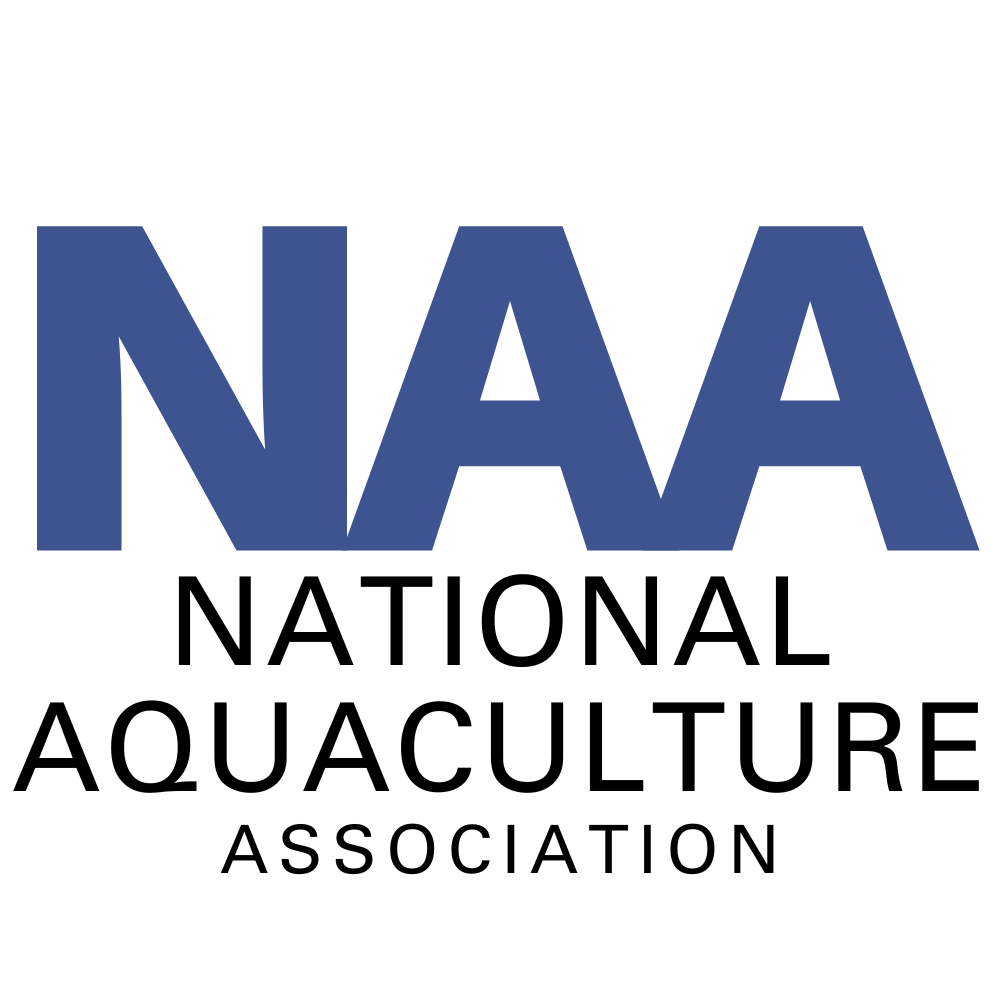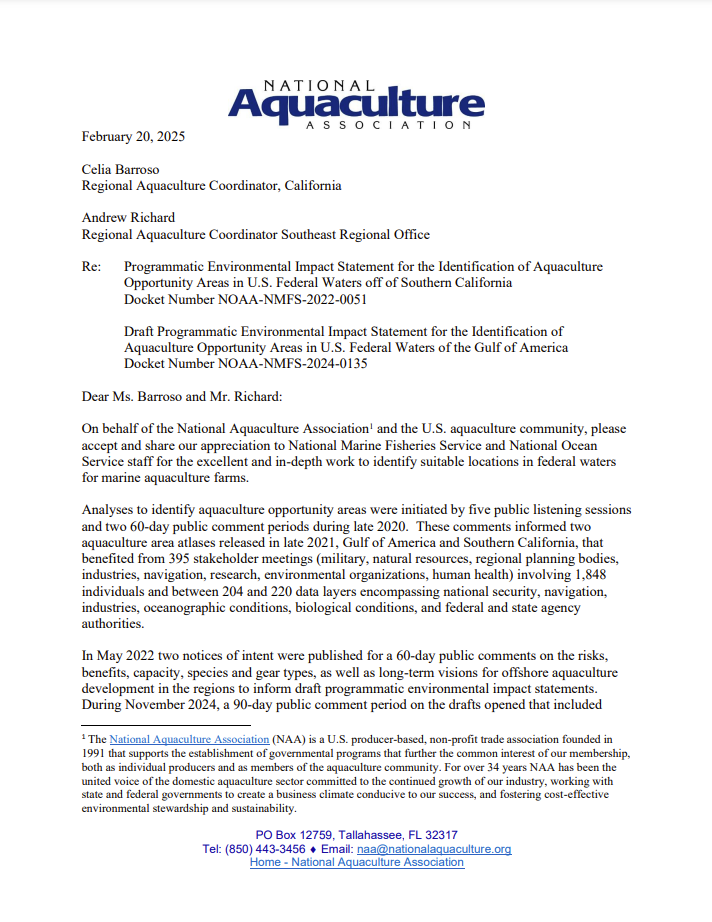
NAA Recognizes and Praises NOAA’s Effort to Identify Suitable Offshore Farm Sites
In May 2020, Executive Order 13921, Promoting American Seafood Competitiveness and Economic Growth, directed the Secretary of Commerce to identify at least two geographic areas containing locations suitable for commercial aquaculture and complete a programmatic environmental impact statement for each area to assess the impact of siting aquaculture facilities.
Analyses to identify aquaculture opportunity areas were initiated by the National Oceanic and Atmospheric Administration (NOAA), Office of Aquaculture and National Ocean Service by five public listening sessions and two 60-day public comment periods during late 2020. These comments informed two aquaculture opportunity area atlases released in late 2021, Gulf of America and Southern California, that benefited from 395 stakeholder meetings (military, natural resources, regional planning bodies, industries, navigation, research, environmental organizations, human health) involving 1,848 individuals and between 204 and 220 data layers encompassing national security, navigation, industries, oceanographic conditions, biological conditions, and federal and state agency authorities.
In May 2022 two notices of intent were published for a 60-day public comments on the risks, benefits, capacity, species and gear types, as well as long-term visions for offshore aquaculture development in the regions to inform draft programmatic environmental impact statements. During November 2024, a 90-day public comment period on the drafts opened that included three public listening sessions. The public comment period closed February 20th and the NAA submitted a comment letter praising NOAA’s efforts. All of the information and public responses were published to the internet at National Marine Fisheries Service and regulations.gov webpages and freely available to the public.
Read NAA's Comment Letter Here
These simultaneous, complex, thoughtful and thorough efforts to gather and integrate, social, economic, biological, ecological, and regulatory information, was massive in scale and scope and entirely unprecedented by any agency at any time in U.S. history to assess a potential ocean use.
The comprehensive work done to identify potential development sites and to address potential stakeholder concerns is important. Those efforts will assist in providing investors greater confidence in ventures that inherently have risks associated with them. It is critical that all federal agencies take the next step and actively support the development of several pilot projects that concretely demonstrate feasibility and success in this promising sector. That support should include, but not be limited to, financial tools that help reduce risk and improve the competitiveness of those projects in the face of seafood produced in other countries that are heavily subsidized by their governments.

